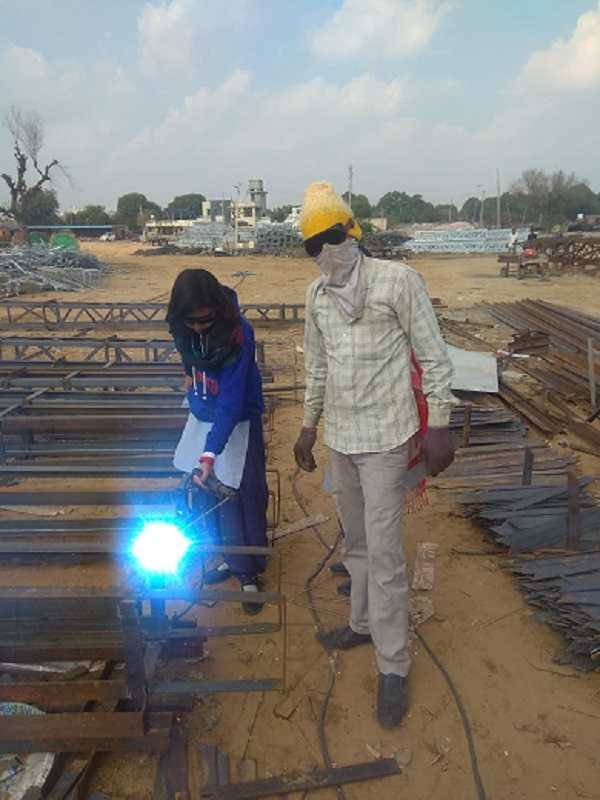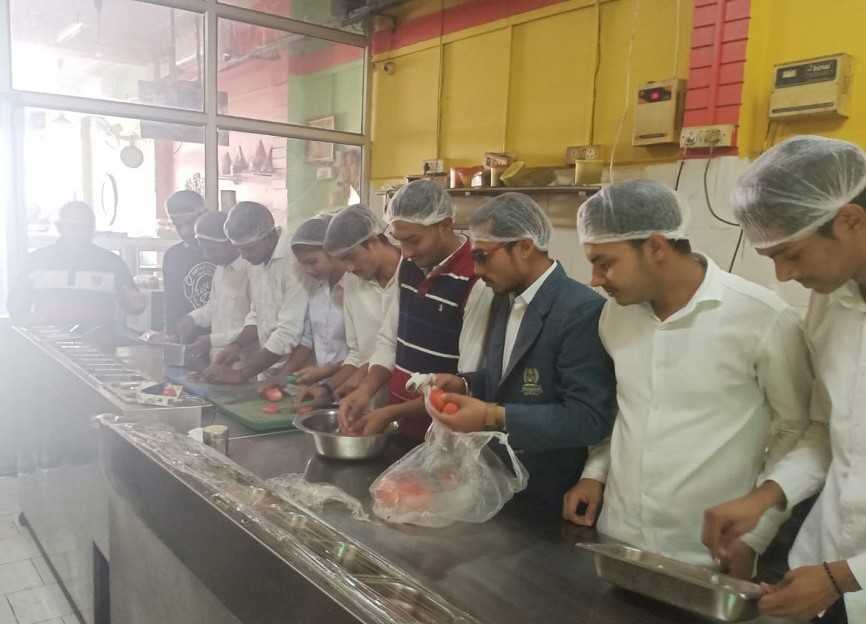Industrial Training Institutes in India trace their origins as far back as the 1950s. They were established to provide skilled manpower to industries. However, since the 1950s, when the first steps towards industrial training were taken, the ecosystem has not seen significant innovation.
Dual System of Training
In 2005, Germany pioneered the Dual System of Training (DST) model. A decade later, India boarded the DST bandwagon when the Ministry of Skill Development and Entrepreneurship (MSDE) formally launched DST to be rolled out in ITIs. In the Indian context, DST is a mode of vocational education, wherein ITIs partner with industries to provide on-the-job Training (OJT) to students on industry premises for a fixed duration of their course (one or two years).
As of 2019, 740 plus units (a unit is equivalent to a classroom, consisting of 26 trainees per unit) in the country have been implementing DST, with the potential to train 14,000 trainees per year on the latest machinery available at partner industries. While trainees undergo theoretical training in the classroom in addition to and basic practical training, DST provides them an opportunity to learn on the job while working in the industry premises. This is different from the traditional apprenticeship model, as trainees get to work and learn in the industry while studying, and not after. Apart from theoretical and practical knowledge, trainees also learn professional skills in the industry, which are vital in any job.
This blog is a primer on DST and Haryana’s experience implementing it in the 2019-2020 academic year.
Haryana’s DST Experience: The Framework
Haryana implemented DST in 72 units in the 2019-20 academic year, which constitutes around 10% of all 740 DST units in the country. Around 40 industries partnered with 27 ITIs across the state to run courses in the DST mode. To ensure effective implementation of DST, the state developed a framework that would answer these critical questions:
Division of Responsibilities and Safety
- Who is responsible for DST implementation in a unit?
- Who is responsible for the safety of trainees?
--Detailing Roles and Responsibilities (R&R) of all stakeholders: Detailed R&R was prepared for every stakeholder to ensure high quality implementation. For example, the trade instructor would be responsible for training, maintaining discipline, attendance and safety of trainees, while the industry partner would be responsible for providing training support, a dedicated supervisor, access to the shop floor etc.
--On-site Safety Concerns: Wage workers, apprentices and DST trainees face the same risks on the shop floor. While wage workers and apprentices receive insurance support from the industry, DST trainees do not. Industries who partnered with ITIs for DST were reluctant to provide insurance to trainees as it would be an additional cost. At the same time, several industries were also reluctant to provide training to DST students on the shop floor due to safety concerns. Haryana’s Department of Skill Development provided insurance to all ITI trainees undergoing DST, thus easing the pressure on industries. Haryana has been the only state to provide insurance to DST trainees.
Learning and Discipline
- Who is responsible for maintaining discipline among trainees while they are in the industry?
- How should trainees split their time getting trained in the ITI and industry?
- What topics are covered in the ITI and industry premises?
--Ensuring a dedicated instructor for DST Unit: Ensuring trainees maintain discipline while on the industry premises is difficult, given that a workplace demands punctuality, proper etiquette and professionalism. Inculcating these attributes is not prioritized in ITIs. A dedicated trade instructor for each DST unit was mandated to ensure theoretical and practical training in ITI and the industry and also to ensure discipline while training on the industry premises.
--Trainee discipline and motivation: Trainee discipline, punctuality and display of professionalism was an issue for most industry partners. Addressing these issues required giving trainees a sense of responsibility, competition and role modelling. All trainees had to mandatorily maintain on-the-job training (OJT) diaries to record what they learnt everyday. The trade instructor would ensure trainees filled these diaries at the end of each day. Best performing trainees were also recognized and appreciated by industry partners as “DST trainee of the month”, akin to being the best employee of the month.
--Creating an Academic Calendar: Every DST trade unit had to prepare an academic calendar to determine the time spent in ITI and industry, along with a detailed list of outcomes trainees would have to achieve during on-the-job training. Creating an academic calendar is a collaborative exercise between ITI staff and industry partners, and a predefined academic calendar provides full clarity on the training topics and outcomes to all the stakeholders including trainees.
Review and monitoring
- What is the issue-resolution mechanism between the ITI and industry partners?
--Setting up DST Management Committees: A DST Management Committee (DST-MC) was constituted for all 72 units with representatives from ITI, industry premises and Joint Director, District Industries Centre (JD-DIC), with JD-DIC as the chairman of the committee. Every DST-MC has to meet once a month to discuss progress on DST implementation. Aspects such as trainee discipline, course completion, attendance would also be discussed and problems if any, would be solved in the meeting.
--Regular Reviews: A monthly and quarterly review mechanism was put in place to ensure quality implementation and problem solving. Monthly and quarterly reviews would be chaired by the Director and Secretaries of Dept. of Skill Development and all implementing stakeholders (concerned ITI staff and industry partners) would participate. Aspects of implementation such as adherence to academic calendar, availability of full-time trade instructor and industry supervisor, issues faced by industry such as trainee discipline would be discussed in the monthly and quarterly reviews.
Logistics
- How can all students have access to industries?
--Travel to Industry: Travel to industry premises was an issue for many trainees, owing to transportation problems and distance from ITI. Industries were seldom in a position to provide transportation to trainees. While in some cases, the ITIs were able to manage transportation, after the Covid-induced lockdown, both ITIs and industries were closed for a significant period.
It is important to note here that many of these issues came up during the course of implementation and they had to be actively solved on an ongoing basis.
Haryana’s DST Experience: The results
From focusing solely on increasing the number of trainees under DST, Haryana has pivoted towards increasing the number of DST students getting placed. For DST trainees graduating in 2020, the state was able to achieve 55% placements.
What makes a DST unit successful?
There are some key principles that can be drawn out from Haryana’s DST experience, that can be used by any state attempting to make a DST unit successful.
- Identify the right kind of industry to partner with: Partner selection is perhaps the most important aspect for a successful DST. Forcing an industry to partner with an ITI for DST has backfired in most cases. The following checklist helps identify the right partner.
--Industry should be able to provide training for at least 25 trainees: While it is possible to identify smaller industries who are committed to providing training, it is often too taxing for industries to accommodate a large number. Based on experience, any industry with an employee strength exceeding 30 is a good enough place to provide training with ease.
--Industry should have a real need for people and commit to placements: It is important that ITIs partner with industries which at least in principle agree to absorbing trainees within the same industry to the extent possible. If necessary, industry partners should be willing to facilitate placement of DST trainees (based on merit) in partner organizations, sister companies or other players in the ecosystem.
--Distance and transport matters to trainees: Often, due to a lack of industry presence in the area in which the ITI is, the institute partners with industries in surrounding cities which might not be easily accessible. This results in trainees resisting OJT. A good rule of thumb is to identify industries within a 10 km radius with easy transportation options.
- Trade in question should address major production activity/service in the industry: Care should be taken to ensure that the trade selected should contribute to major production activity/service in the industry. For example, with an industry that manufactures textiles, trades such as sewing technology or dress-making would be most suitable, but not fitter or electrician, even though the industry is in need of people from that trade as well. This is important for two reasons, if a student is not getting trained in the key production activity or service, then chances are that he or she will not be able to learn much from the industry supervisors who are themselves providing a support function. Additionally, this also reduces the chances of the student getting placed in the same industry as they might not have many vacancies for support functions.
- Government shall invest in insurance, not the industry: All stakeholders, government and industries alike should prioritize safety of trainees. However, the government should provide insurance to trainees, and not burden industries on this front. The feedback from industry partners in Haryana in this regard has been highly positive. Industries should only focus on providing training on the shop floor and ensure safety of trainees at all times as a general practice.
- One DST Unit - One Trade Instructor: Given that trainees spend a substantial proportion of their time in the industry, the job of a trade instructor is most crucial to teach theory, assist in practical training and ensure safety, discipline of trainees.
- An academic calendar is a must for every DST unit: All parties in question, i.e., industry partners, ITI staff and trainees should have clarity on the learning objectives and activities that are to be learnt in the ITI and Industry. This provides clarity on the roles of all stakeholders.
- Initiate a rewards mechanism in advance: Trainees perform extremely well when a reward mechanism is in place, especially in the industry. When trainee discipline was a major issue in Haryana, initiatives such as DST trainee of the month (based on attendance, punctuality, demonstration of required competencies) helped ITIs and industries maintain discipline and inculcate a sense of professionalism. Rewards can also be in the form of a stipend which trainees can redeem on successful completion of training and based on display of professionalism.


